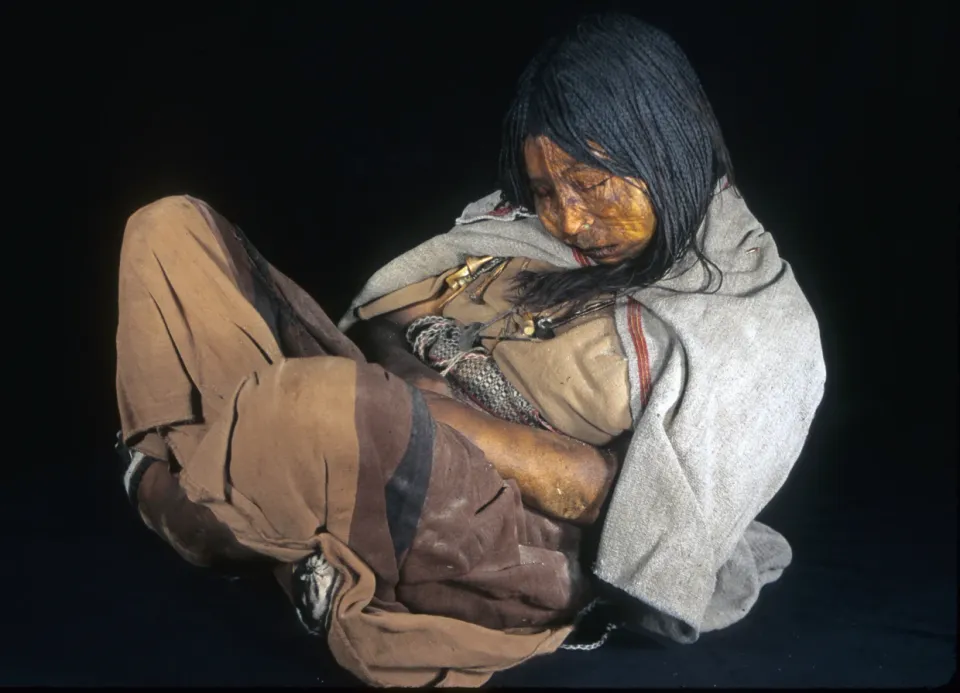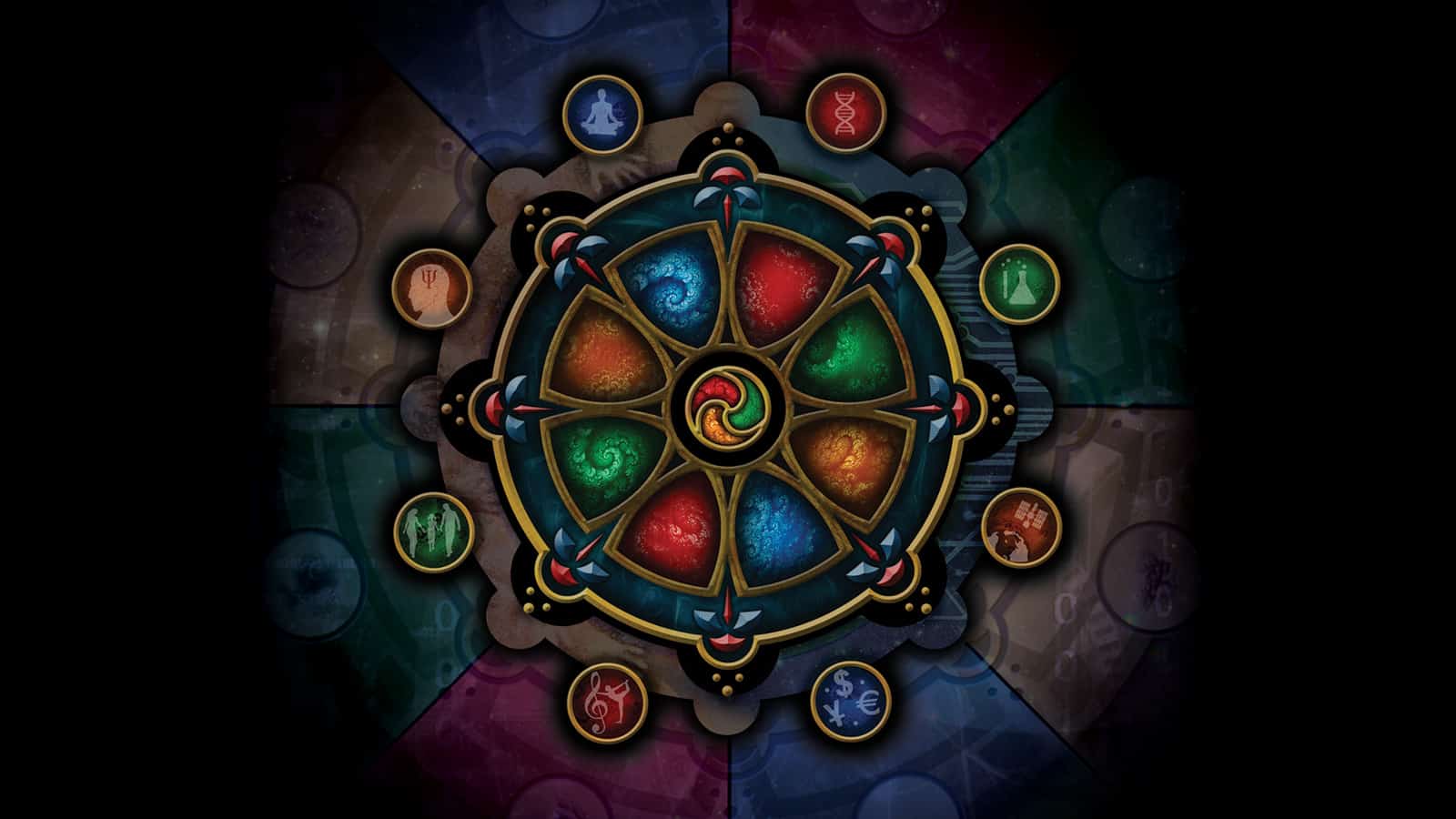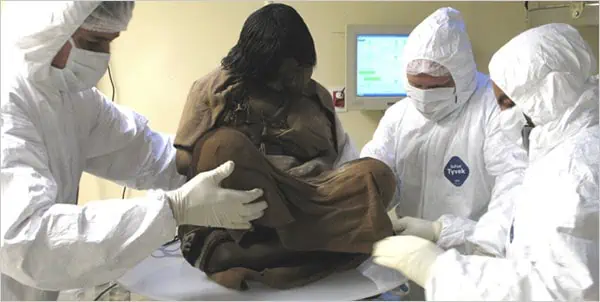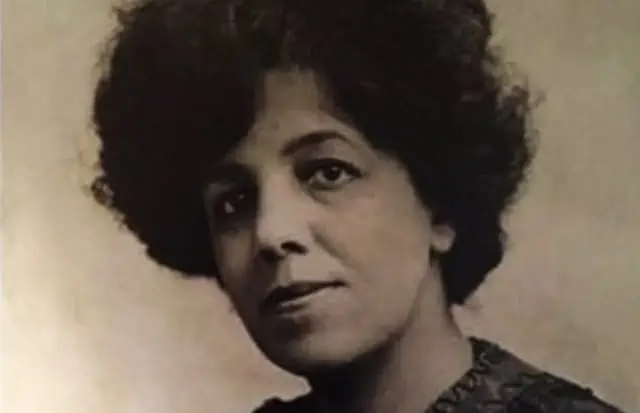The Fascinating Story of the 500-Year-Old Frozen Body of an Incan Girl

In 1995, a team of mountaineers stumbled upon a frozen body in the Andes Mountains of South America. Little did they know, they had discovered the incredibly well-preserved remains of an Incan girl who had been frozen for over 500 years. Her discovery has captivated scientists and historians alike, as they work to uncover the secrets she holds about Incan culture and the mysteries of the past.
Discovery of the Frozen Body
In 1995, a group of mountaineers were trekking through the Andes Mountains when they stumbled upon the frozen body of a young girl. At first, they thought it was a recent victim of a plane crash, but upon closer inspection, they realized that the body was incredibly well-preserved and had been frozen for centuries. The discovery of this frozen body has since been hailed as one of the most important archaeological finds of the 20th century.
The girl, who has come to be known as the Incan Ice Maiden or Juanita, was believed to have been a sacrifice to the Incan gods over 500 years ago. Her body was found at an altitude of 20,700 feet, and the freezing temperatures and lack of oxygen had helped to preserve her body and clothing. Scientists have been able to learn a great deal about Incan culture and rituals from studying Juanita's body, including the fact that she was likely drugged with coca leaves and alcohol before being sacrificed. The discovery of the Incan Ice Maiden has shed new light on the history of the Andean region and has helped to deepen our understanding of ancient cultures.

La Doncella, often known as The Maiden, the frozen body of an Inca girl, was found in 1999 in Argentina's Andes. One of three kids left on a mountainside to perish from the cold as sacrifices to the gods, she was one of the three. The girl's ceremonial tunic and headgear, signs of her new role as a messenger to the skies, were on her. Her mouth still contained pieces of the coca leaves the Inca chewed to relieve pain and hunger and some maize liquor likely to have put her to sleep. La Doncella's find provided rich insight into ancient Inca culture, including the girl's delicately braided hair.
Preservation of the Body
The preservation of the Incan girl's body is nothing short of miraculous. The cold, dry climate of the Andes Mountains helped to slow down the decomposition process, while the fact that she was buried in a shallow grave helped to protect her from scavengers. Additionally, the high altitude helped to preserve her body by slowing down the rate of bacterial growth. All of these factors combined to create the perfect conditions for the preservation of her body for over 500 years.
The Incan girl's body was so well-preserved that scientists were able to study her clothing, jewelry, and even the contents of her stomach. They discovered that she had been drugged with coca leaves and alcohol before being sacrificed to the gods. The preservation of her body has provided valuable insights into the Incan culture and their religious practices. It is a testament to the incredible resilience of the human body and the power of nature to preserve even the most delicate of things. The Incan girl's body will continue to be studied and admired for generations to come.
Analysis of the Body and its Artifacts
Scientists and historians have been studying the frozen body of the Incan girl, known as "Mummy Juanita," and the artifacts found with her for years. Through analysis of her DNA, they have been able to determine that she was likely a teenage girl who was sacrificed to the Incan gods. The artifacts found with her, including clothing and pottery, have provided insight into Incan culture and daily life. Additionally, the presence of coca leaves and other plants in her system have given clues about Incan medicinal practices. The study of Mummy Juanita continues to provide valuable information about the Incan civilization.

One of the most fascinating aspects of the study of Mummy Juanita is the analysis of her clothing and other artifacts found with her. Her clothing, made of finely woven fibers, provides insight into Incan weaving techniques and fashion. The pottery found with her also gives clues about Incan daily life, including their diet and cooking methods.
La Doncella is regarded as one of the most well-preserved mummies ever discovered. Her facial features, skin, blood, and internal organs were unharmed. Before 2007, when she debuted at the Museum of High Altitude Archaeology in Argentina, she was stored in freezers and never displayed to the general public. Instead, scientists examined her hair to learn more about her, including what she ate, drank, and how she lived. She was most likely chosen for sacrifice around a year before her passing, at 13 or 14. The results of the tests showed this. Because of her "virgin" status, she was highly coveted by the Incas.
Insights into Incan Culture and Society
The discovery of Mummy Juanita and the artifacts found with her have provided valuable insights into Incan culture and society. For example, the clothing found with her suggests that the Incans were skilled weavers and had a sophisticated textile industry. The pottery found with her provides clues about Incan art and daily life. Additionally, the presence of coca leaves in her system suggests that the Incans used the plant for medicinal purposes. The study of Mummy Juanita continues to shed light on the fascinating civilization of the Incas.
The discovery of the 500-year-old frozen body of Incan girl, also known as Mummy Juanita, has been a significant archaeological find. The artifacts found with her have provided valuable insights into Incan culture and society. For example, the clothing found with her suggests that the Incans were skilled weavers and had a sophisticated textile industry. The pottery found with her provides clues about Incan art and daily life. Additionally, the presence of coca leaves in her system suggests that the Incans used the plant for medicinal purposes. The study of Mummy Juanita continues to shed light on the fascinating civilization of the Incas, and researchers are still uncovering new information about their way of life.
The mummy of a teenage Inca girl who was sacrificed more than 500 years ago in the Andes Mountains is known as La Doncella. The well-preserved frozen body of Juanita, also known as the Lady of Ampato, is that of an Inca girl who was slaughtered as a human sacrifice to the Inca gods between 1440 and 1480 when she was between the ages of 12 and 15. Two mummies were found in the Andes Mountains, where they had been abandoned on a mountaintop to perish from the cold as sacrifices to the gods.
The Juanita mummies were found in Peru in 1995, moved to the US in 1996 for a CT scan, and finally shown in Japan in 1999. Juanita's body is currently kept in Arequipa, Peru's Museo Santuarios Andinos. The first public viewing of La Doncella, discovered on the Llullaillaco volcano in Argentina, occurred on September 6, 2007, at the High Country Archaeological Museum in Salta.
Continuing Research and Discoveries
The discovery of Mummy Juanita in 1995 was just the beginning of a long journey of research and discoveries. Since then, scientists have continued to study her body and the artifacts found with her, using advanced technology to uncover even more information about her life and the Incan civilization. For example, recent studies have revealed that she suffered from a bacterial infection and had a diet rich in vegetables and grains. The ongoing research into Mummy Juanita and the Incan culture she represents is sure to reveal even more fascinating insights in the years to come.
In addition to the study of Mummy Juanita herself, researchers have also been examining the artifacts found with her, such as clothing, jewelry, and tools. These items provide valuable clues about the Incan way of life and their beliefs. For example, the intricate weaving patterns on her clothing suggest a high level of skill and artistry in Incan textiles.




